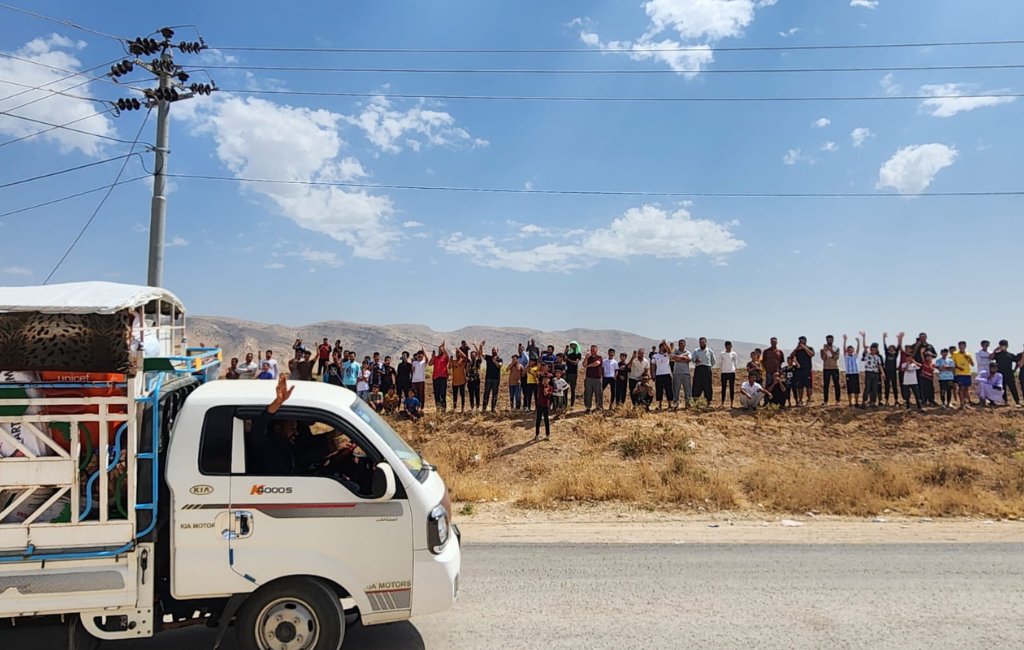
Engagement Hub
Six practical insights to maximise your research project’s impact
Authors
About
Daniela Vono de Vilhena
strategy
Jakub Bijak
Developing a clear impact plan requires a multidimensional and transdisciplinary strategy and can be challenging for research teams involved in large EU-funded projects, such as Horizon. In this short, we share some of the engagement strategies we used to maximise the impact of the project “Quantifying Migration Scenarios for Better Policy” (QuantMig).
Here are six tips to maximise your project's impact from day one:
1. Impact by design, not afterthought
Strategy matters from the very beginning. Scholars should consider impact as a core component of their projects from the very beginning and involve a professional impact and engagement team from the outset. In EU-funded Horizon Europe grants, impact accounts for one-third of the evaluators’ scoring criteria. A convincing impact strategy needs to be created by these professionals together with the scholars involved in the process. The impact, outreach and engagement tasks and agenda need clear ownership, ideally by a dedicated project partner, and strong backing from the project lead.
2. Clear strategies: Tailoring plans for distinct goals
Communication and dissemination are two separate concepts that the European Commission requires to be addressed in impact strategies. Understanding the specific demands of each area and developing a clear plan to reach and engage different stakeholders is essential for ensuring sustained impact throughout the project. The same is the case for different audiences. Projects need different strategies to reach academic peers, policymakers, civil society organisations, industries and general audiences.
3. Clear priorities: Choosing wisely and keeping the consortium engaged in creating impact
Members of research consortia are crucial to the success of any impact strategy. For these strategies to be effective, scholars must be committed to the project’s research and its impact strategy as a core part of the project. This entails being eager to engage with a broader audience. To create this high level of interest from the consortium, there has to be a strong collaboration and impact culture and effective internal communication. Otherwise the impact strategy will falter and consortium members might view ‘impact’ as just something the impact coordinator is responsible for.
4. Best for the task: Engaging the right people
The goal is to harness the power of stakeholder analysis and engagement throughout the project. While a solid communication strategy to reach general audiences is essential, targeted, one-on-one interactions with key actors are equally important. Identify those genuinely interested in your research and involve them in an exciting and respectful manner. Explore inclusive formats of mutual learning where everyone has time to share and discuss specific issues to reach and engage stakeholders beyond those initially considered and do so early on in the project, not just at the end.
5. Research translation: Listen to non-academic stakeholders to understand policy agendas and learn their language
Scholars do not create societal impact by speaking in academic jargon or writing 8,000-word articles. An impact coordinator can identify policy areas relevant to your research, understanding the policymaking process, and producing concise content such as digests, blogs, or policy briefs. This content should use appropriate language and frame the research in line with policy priorities and goals. Adapting your language and understanding policymakers’ constraints and opportunities is vital for making your research relevant and impactful.
6. Integrity and trust: Respect boundaries
Academic communities, disciplines, and individual scholars vary in their views on the role academics should play in creating “impact” with their research, as well as in their goals in terms of impact. Especially since the COVID-19 pandemic, there has been a growing call among scholars for prudence and impartiality when engaging with non-academic stakeholders, and honesty about what they can and cannot do. This caution is crucial for maintaining the integrity and credibility of academic work, and for creating trust with stakeholders: do not be tempted to overstate your results just to get the stakeholders’ attention. This can backfire in the long term.
How this worked for us
Applying this strategy during QuantMig enabled us to bring the project’s results to the attention of policy makers. It also helped us to work closely with our stakeholders, particularly our Advisory Board, which included representatives of the EU Agency for Asylum (EUAA), Eurostat, and the International Organization for Migration (IOM). The events we organised also gained traction with policy advisors: one example is a report by the European Parliamentary Research Service, making note of our findings on the limitations of treating immigration as a solution to demographic challenges.
So, if you want to maximise your impact, remember these three things
1. Impact and engagement should be part of the project design from the outset, with resources to match, and cannot be an afterthought.
2, An effective research communication strategy requires a professional impact and engagement team at the heart of the project, buy-in from the research teams, and clear commitment and support from of the project’s leadership.
3, Despite all temptations, given the uncertain nature of complex phenomena, such as migration, it is important to talk through and clarify the role that you as a research team will have with policymakers. There need to be clear boundaries as to what we are able to say as researchers based on evidence – and what needs to be left to the policymakers to decide
Learn more:
QuantMig project website
Book chapter – Communico, ergo sum? Potential and Pitfalls of Knowledge Exchange.
Daniela Vono de Vilhena is Deputy Executive Secretary of Population Europe in Berlin, hosted by the Max Planck Institute for Demographic Research. She led Population Europe’s contribution to the QuantMig project (2020-2023).
Jakub Bijak is Professor of Statistical Demography at the University of Southampton, UK. He led the QuantMig project.
Related resources
Submit your idea for a ‘short’ to be featured on the Co-Lab.












